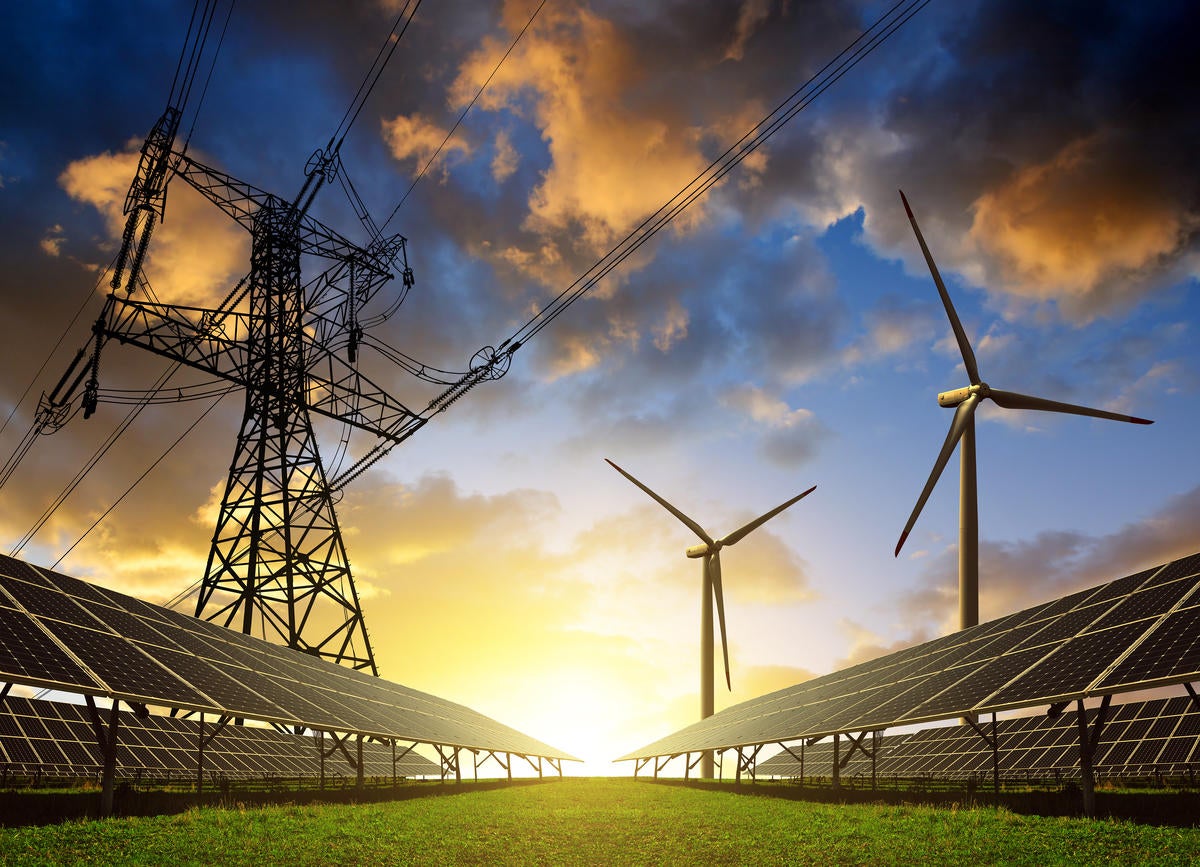How can economics contribute to decarbonizing power markets?
Electricity system operators balance supply and demand precisely at every moment of every day through market design grounded in economic principles. As the share of variable renewable resources like wind and solar electricity on our electricity system increases, system operators, policy makers and energy market regulators are facing new questions on how to design the rules governing our electricity market to support decarbonization of our energy system.

Christopher Holt, PhD student in agricultural and resource economics at the University of Maryland, recently published an EDF Economics Discussion Paper, in which he reviews these new questions in wholesale electricity market design and identifies a number of areas where economic research can help inform decision-makers to facilitate decarbonization.
Chris wrote this paper during a summer pre-doc fellowship at EDF and Kristina Mohlin, who hosted Chris during the fellowship, recently chatted with him about his paper and his experience as a pre-doc fellow at EDF.
Kristina: What was your starting point for this pre-doc fellowship?
Chris: State and local leaders have been setting ambitious decarbonization targets. More recently, President Biden has pledged to make US electricity production free of carbon by 2035. My starting point was to try and understand how electricity market practitioners are working to change and refine the sophisticated set of rules governing wholesale markets, so that these targets can be met.
During my time at EDF, I spoke with industry representatives, policy makers, external economists, and other stakeholders at policy meetings, conferences, through video chats, and over countless cups of coffee. I also learned a lot by chatting with the highly talented folks internal to EDF. These conversations alerted me to many gaps in the applied economics literature, which I then described in the paper.
Kristina: One defining characteristic of electricity markets is that consumers do not respond to wholesale price fluctuations in real time. How can markets be designed to enable and encourage price-responsive demand?
Chris: California’s Demand Response Auction Mechanism (DRAM) is a promising example of how market design can reward innovation that encourages response to prices at the individual user level. This mechanism, still in its pilot form, allows companies to bring together demand across a group of electricity consumers, e.g. by coordinating power drawn from their appliances. The aggregator can then curtail demand when electricity is scarce at a minimal loss to consumers, who may be compensated for their agreement to participate. Wholesale market prices are kept low by way of the curtailed demand, benefitting all consumers of electricity (not just the participating ones). This is a “win-win”: lower prices for consumers and a profitable return for the aggregator. Importantly, this arrangement would not exist without the wholesale market design.
While the incentives are powerful, getting the design right is not easy. Projects like DRAM have a long way to go before they are approved for permanent integration into market operations—which is exactly why additional research is needed.
Kristina: Another key defining characteristic of electricity markets is that electricity is not storable. How will utility-scale storage affect market operations?
Chris: Yes, storage is not yet available at large scale, but this seems likely to change in the near future. The Federal Energy Regulatory Commission’s landmark Order 841 is intended to facilitate the participation of storage resources in energy markets. Some firms have already begun to complement variable renewable generation assets with large-scale battery technologies, and industry forecasts suggest major cost reductions for batteries in the near future. When storage technologies are deployed at scale, short-run market operations will require a new set of rules, which must be guided by economic research.
Kristina: Could you explain to our readers what this has to do with decarbonization?
Chris: Both price responsive demand and storage are closely tied to decarbonization because they allow consumers to buy electricity when it is cheap and clean rather than when it is expensive and carbon intensive (this is most apparent when there is a price on carbon). Electricity from wind and solar is essentially free once investment costs have been incurred and the plants have been built. Currently, when electricity is scarce, carbon-intensive peaker plants are needed to maintain reliability. These peaker plants, which are also relatively expensive to run, are increasingly needed to complement the variability of renewables, e.g. when the sun goes down in California, or the wind stops blowing in Texas. Unlocking price responsive demand and introducing storage capacity will reduce the need to rely on peakers.
Kristina: How will long-run investments be affected by increased participation of electric storage and price-responsive demand?
Chris: Changes to demand-side price response and the storability of electricity have crucial implications for how firms plan to invest in new generation assets and retire old plants. If consumers are able to pre-empt the high prices associated with peaker plants, why invest in peaker plants at all? Storage may bring benefits in helping to reduce emissions, but will firms be incentivized to invest in it? Regulators in New York, for example, have set considerable storage capacity targets. Experts suggest many ways to reach such targets and to ensure that more storage capacity indeed translates to decarbonization (carbon pricing is central among them).
The difficult task of guiding efficient long-run investment is further complicated when an electricity system spans political jurisdictions with differing policies. The simple fundamentals of electricity market economics are of value here, reminding us that proper pricing is often the key to efficiency—pricing that reflects resource scarcity, the value of quickly dispatchable resources and demand response, and the harm imposed by carbon pollution. Through my EDF pre-doc fellowship, I found that we need new research to connect these classic fundamentals to the new challenges associated with scaling up renewables.
Kristina: Finally, what would you like to tell other PhD students who have the opportunity to apply for an EDF pre-doc fellowship about your experience at EDF?
Chris: The pre-doc fellowship is a great way to focus in on the questions you might want to address in your dissertation. My job market paper was inspired in large part by my time at EDF. Having access to the network of experts that the fellowship offered was an ideal way to become more familiar with certain areas and overcome the steep learning curve associated with my field. EDF also values their alumni—I have continued to keep in touch with folks I met through the fellowship and attend EDF workshops. Overall, I would highly recommend the fellowship!











